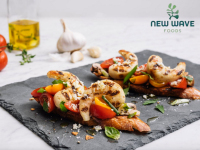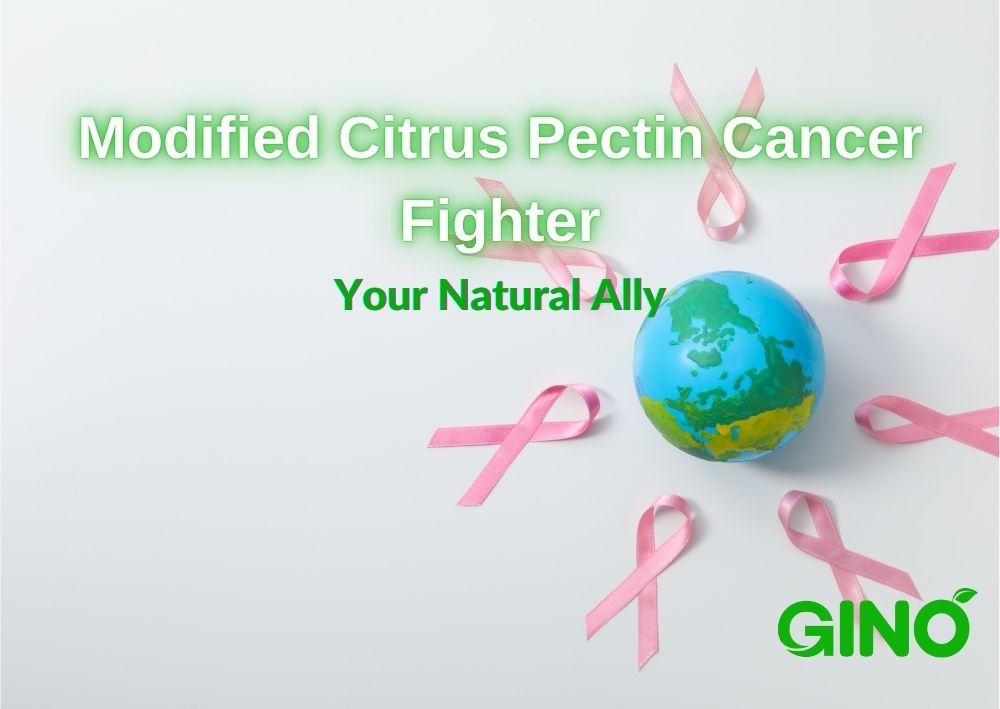
5 Knowledge Points To Help You Fully Understand Plant-Based Seafood
5 Knowledge Points To Help You Fully Understand Plant-Based Seafood

1. Reasons for the rise of plant-based seafood
"Seafood allergies, gout, and vegetarianism are all important reasons driving the growth of plant-based seafood in Europe and the United States as well as in the Chinese market, but all also face the huge challenge of consumer education"
Seafood allergies have been a pressing issue in the food world.
Gluten-free products are the best choice for those with gluten allergies, and a range of products have been developed using rice flour, tapioca flour and other starchy products to make breads, etc. Lactose intolerance is an intestinal allergy that occurs in some people who are intolerant to lactose, and A2 milk and other products are effective alternatives to traditional cow's milk.
But seafood allergy has been an insurmountable obstacle, and consumers with such allergies have to choose products and dishes without seafood.
Another affliction that seafood brings is gout.
According to the 2017 China Gout Status Report White Paper, the Chinese population with high uric acid reached 170 million people that year, with nearly 80 million gout sufferers, and it is expected that by this year, gout sufferers will exceed 100 million. The high purine content in seafood is also an effect brought by seafood.
On the other hand, the marine ecology has been damaged by human industrial development, the reduction of fishing resources and reckless fishing make some fish on the verge of extinction. According to WWF data, nearly 1/3 of the economic fish stocks have exceeded their fishing limits. NU data show that more than 90% of fish are threatened by overfishing. Wild rhubarb populations off the coast of China have also declined dramatically, while prices have risen. The development of plant-based seafood, on the other hand, could play some role in promoting sustainable ocean development.
In contrast to the current boom in plant-based red meat products, plant-based seafood has only recently emerged in Europe and the United States as a third major alternative to traditional plant-based products such as red meat and chicken. Plant-based seafood emerged in Europe and the United States in 2016, and for the domestic market, plant-based seafood is not a new thing. Vegetarian seafood has been documented since the Qing Dynasty, and there are also traditional folk dishes such as vegetarian abalone, vegetarian shrimp, and vegetarian crab.
2. Technology of plant-based seafood
Protein
The protein composition of seafood is very different from that of red meat, which also makes the taste and texture of seafood meat different from traditional red meat.
Seafood can be divided into fish and shrimp, shellfish and squid and other mollusks. Most of the seafood products reflect the Q-tip and fresh taste after cooking.
Texture
The konjac is a great ingredient to replicate the texture of seafood, and the Q-texture is mixed with some colloid to achieve a texture similar to squid rolls or shrimp. Fish is a bit more complex, and the addition of textured soybean protein or other bean proteins is needed to restore the tender texture of the fish.
Flavor
In terms of flavor, plant-based seafood requires a fish flavor to bring out the seafood flavor. Seaweed and some herbs (e.g., fishy grass, celery, etc.) are fish-flavored ingredients that quickly give the product a fresh, marine flavor.
Sodium alginate can be made into a variety of gel food, maintaining good gel structure, without leaking or shrinking, suitable for use in dry frozen food and artificial imitation type food.
It can also be used to cover fruits, meat, poultry and aquatic products as a protective layer, not in direct contact with air and prolong storage time.
3. Plant-based seafood startups in Europe and the US
Good Catch Food

In the European and American markets, Good Catch Food announced its new products, frozen plant-based fish burgers, crab cakes and fish cakes.
The ingredients include pea protein, soy protein, chickpea protein and other legume proteins. The binder of the product is enhanced by cellulose, and the flavoring is achieved by algae oil.
BlueNalu

Startup BlueNalu has also closed a $20 million angel funding round, and the company developing cell-based seafood products will have a deep impact on the overall marine replacement protein market.
Sophie's Kitchen

Among these startups, venture capitalists from Singapore are the most active, trying to find some alternative to marine protein to get rid of the dependence on food imports. Another Singaporean government-invested brand is Sophie's Kitchen in the U.S. Founder Eugene Y. Wang started making vegan scallops, prawns and canned tuna from konjac flour and pea protein in 2011. She started the business to help her daughter, who has a severe allergy to seafood.
Ocean Hugger Foods

Ocean Hugger Foods uses tomatoes as the main ingredient for their fresh tuna sashimi, called AHIMI, which is a restaurant channel that specializes in vegetarian sushi restaurants.
Cavi-art's

Other vegetarian-based seafood products include Cavi-art's plant-based caviar, which is cholesterol-free, healthier and not afraid of hot cooking techniques, giving chefs more options. The caviar itself is made from seaweed extracts and has its own seafood flavor.

Each year, Americans consume 1.4 billion pounds of shrimp. Our sustainable, plant-based shrimp are every bit as delicious – and healthier for you and the environment – as ocean shrimp. Eating New Wave Shrimp® allows us to make a small change that has a big impact.
4. Plant-based Seafood in China
Qishan Foods, which has been providing plant-based seafood products since 1995, generates more than 20% of its revenue from vegetarian seafood, and its main customers are religious and some health-conscious consumers.
As some of the plant-based seafood products are already well known to the public, they have a loyal consumer base in China. But their main goal is not to be a seafood alternative like in Europe and the United States, but rather to promote it to consumers as a food culture, so that they can reacquaint themselves with the characteristics of this category: low fat, low purine, low calories and high satiety.
"Most of the plant-based seafood is made with konjac and its related ingredients, rich in fiber, to improve satiety, the concept is somewhat similar to the current meal replacement, to give consumers a taste of a more healthy concept."
At the same time plant-based seafood as a branch of the overall plant-based market, can gain enough consumer support in China, China itself is a large seafood country, plant-based seafood market can quickly spread, while through a developed e-commerce network can quickly capture consumer feedback on the product for rapid upgrading and iteration.
5. Difficulties of plant-based seafood and future development
When talking about the difficulties of plant-based seafood, experts believe that "the difficulty of plant-based seafood in China at present is no longer the technical level, Chinese cooking techniques can well help the product to have the same flavor as seafood. But consumers do not have a good perception of plant-based seafood."
At the same time, experts also believe that "the higher cost of plant-based seafood, the selling price does not meet the needs of grassroots consumers well, the main consumer groups at present, in addition to religious channels, mostly consumers who are curious about new flavors and a special group of people who have a need for weight control management."
Although plant-based seafood has existed in China for a long time, many people have also eaten vegetarian rattlesnake and vegetarian squid in monasteries, and the taste is not unlike real seafood products.
However, in the mass market education, this aspect of the product is lacking, and like plant-based meat, how to more accurately position themselves as well as determine their own consumer demographic has become a more realistic need.
And in the face of foreign innovation startup class of plant-based seafood companies began to rise, domestic innovation in this area seems somewhat lacking, only a few companies involved in this.
But seafood as a more functional carrier, perhaps more quickly than plant-based meat can be popularized to the average consumer.
Reference recipe for plant-based shrimp
1: 22-25: 2-5 (reference ratio, can be adjusted appropriately)
Our Vegan Shrimp Ingredients | Water | Starch |
1 | 22-25 | 2-5 |
- Process Flow
- Weighing: Compound powder: Water: Starch = 1: 22-25: 2-5, weigh the sample in this ratio.
- Chopping: Turn on the chopping machine, adjust the chopping knife at medium-low speed, add the compound powder evenly into the chopping machine with 5-8℃ ice water, chopping 4-5min until the slurry is sticky, then add the starch and chop it evenly.
- Pouring mold: Use a pump to inject the slurry into the mold, and evacuate it, the purpose is to make the slurry without air holes inside.
- Cooking: Use the steamer to steam at 80-95℃ until fully cooked.
- Demolding and Coloring: Remove the sample from the mold, and brush the color on the surface of the vegetarian shrimp once removed.
- Quick-freezing: Quick-freeze the vegetarian shrimp with a quick-freeze line or quick-freeze storage (center temperature -18 ℃), the sensory performance is frozen hard.


Vegan Shrimp Ingredients
Our vegan shrimp ingredients, also called vegetarian shrimp compound thickeners are compounded with selected hydrocolloids, such as konjac gum or sodium alginate and other ingredients, which are specially used for vegetarian seafood products, especially the plant-based shrimp.










